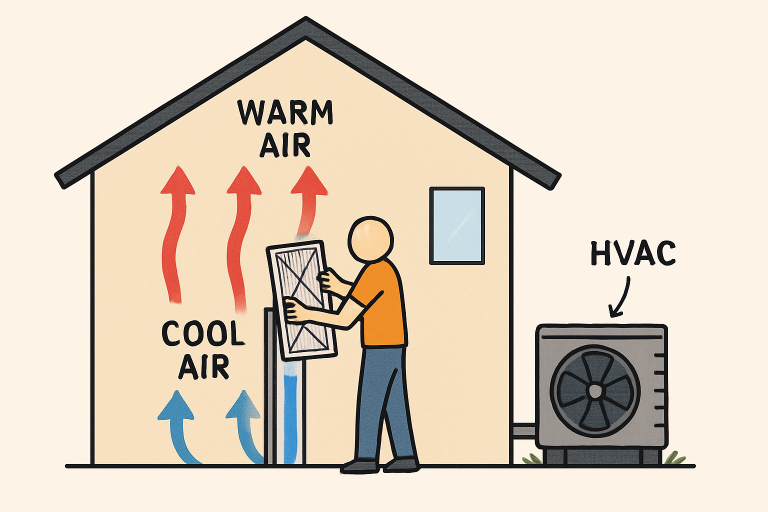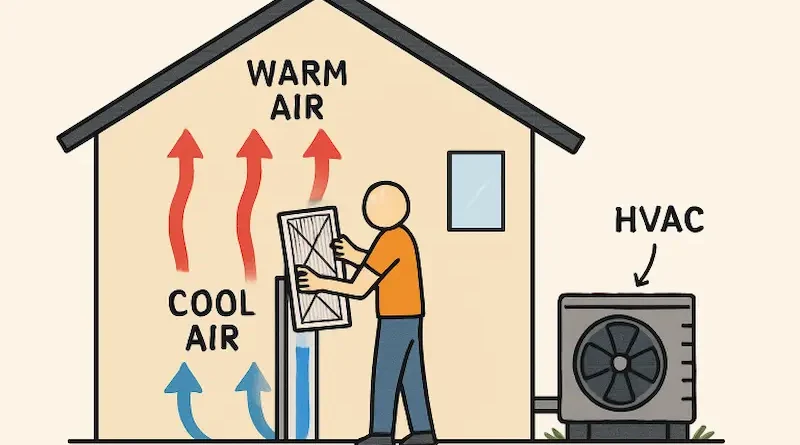Common HVAC Problems and How to Fix Them
Keeping your home’s indoor climate comfortable and consistent depends on a properly functioning HVAC system. However, like all mechanical systems, HVAC units are prone to certain issues that can disrupt performance and drive up energy costs. Prompt identification and management of these issues not only ensures comfort but can also prolong the life of your equipment. If you ever need professional support, reliable HVAC repair and tune-ups in St. George, UT, are available to keep your system operating smoothly.
Homeowners can save time, money, and improve comfort by understanding the root causes of common HVAC issues. Regular maintenance, including filter changes and seasonal check-ups, helps prevent breakdowns, improve air quality, and ensure optimal efficiency. Knowing when to call a professional protects both the system and long-term comfort, while addressing small problems early reduces costs and prevents major failures.

Dirty or Clogged Filters
Air filters play a crucial role in maintaining air quality and airflow in your home. Over time, they collect dust, pollen, and other particles, which can restrict airflow and force your HVAC system to work harder. This not only decreases efficiency but can also cause overheating and even trigger system shutdowns.
How to Fix It
Replace or clean your air filters every 1-3 months, depending on your manufacturer’s recommendations and local air quality. This simple habit ensures unrestricted airflow, optimal energy use, and better indoor air quality. For homes with pets or high dust levels, more frequent changes may be needed. Consumer Reports offers a helpful guide on choosing and replacing filters.
Replacing filters regularly also reduces strain on your HVAC system, which can extend its lifespan and minimize costly repairs. Taking the time to stay consistent with this small task pays off in comfort, savings, and peace of mind.
Thermostat Malfunctions
Thermostats are the brains of your HVAC system. Malfunctions typically manifest as temperature swings or an unresponsive system. Causes range from dead batteries or improper settings to outdated or faulty sensors.
How to Fix It
Start by double-checking your thermostat’s settings, and, if necessary, replace its batteries. If the problem persists, it may be time to upgrade to a modern programmable or smart thermostat, which can offer greater precision and energy savings. Be sure to also confirm the thermostat is installed in a location away from direct sunlight or drafts, as these can influence temperature readings.
Refrigerant Leaks
Low refrigerant levels reduce cooling power, cause warm air to blow from vents, or may even freeze up the evaporator coil. These leaks pose environmental risks and health concerns, making swift action necessary.
How to Fix It
Adding refrigerant is only a temporary fix. Qualified HVAC technicians should be called in to locate and repair leaks, then recharge the system to manufacturer-specified refrigerant levels. Attempting to fix refrigerant issues without proper certification can be dangerous and is not recommended.
Water Leaks
If you notice pooled water around your HVAC unit, the culprit is often a clogged or disconnected condensate drain line. Over time, algae and debris can block these lines, potentially leading to water damage and mold issues.
How to Fix It
Clear the drain line by gently pushing a thin brush or a wet-dry vacuum into the line to remove blockages. Scheduling regular cleaning as part of your annual HVAC maintenance can prevent future problems. For stubborn or recurring leaks, a technician may need to check for additional issues, such as cracked drain pans or improper installation.
Unusual Noises
An HVAC system in good condition should operate relatively quietly. Sounds like banging, rattling, or squealing typically indicate mechanical problems, from loose hardware to failing motors and worn-out belts.
How to Fix It
Conduct a visual inspection to identify any loose or disconnected parts and tighten or secure as needed. Replacing worn belts and lubricating moving components can also reduce noise. If sounds persist, shut off the system and contact a professional to prevent further damage.
Poor Airflow
Inconsistent temperatures, weak air from vents, or “hot and cold spots” usually point to poor airflow. This can result from blocked vents, dirty filters, or leaking ductwork.
How to Fix It
Make sure all registers and vents are open and free from furniture or curtains. Replace filters regularly and inspect ductwork for visible damage. If problems continue, professional duct cleaning or repairs may be necessary to restore optimal flow.
Electrical Issues
Frequent circuit breaker trips, blown fuses, or unresponsive HVAC units often indicate electrical problems. Overworked systems, faulty wiring, or worn components can all be to blame.
How to Fix It
Replace blown fuses and reset breakers if tripped, but only do so after the system has cooled. Recurrent electrical issues should be assessed by a licensed technician to ensure safety and prevent possible fire hazards.
Lack of Maintenance
Regular inspections, cleaning, and tune-ups keep HVAC systems running efficiently and limit the risk of sudden breakdowns. Skipping maintenance can lead to reduced performance, costly repairs, or even premature replacement.
How to Fix It
Schedule a professional service call at least once a year, ideally before the cooling or heating seasons begin. Routine maintenance should include cleaning coils, checking refrigerant levels, lubricating moving parts, and performing a general safety inspection.
By staying attentive to your HVAC system and addressing minor issues as they arise, you can ensure reliable comfort year-round. Preventive care and quick action save money, extend system life, and provide peace of mind during the hottest summers and coldest winters.
Visit the rest of the site for more interesting and useful articles.

